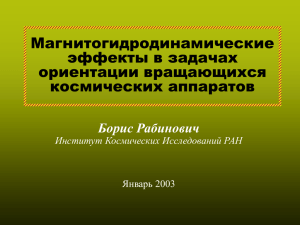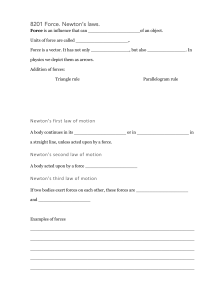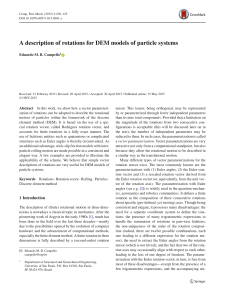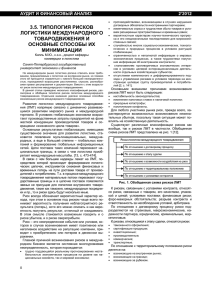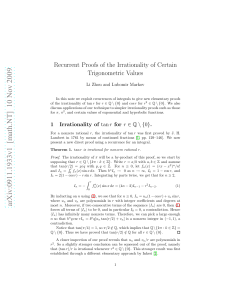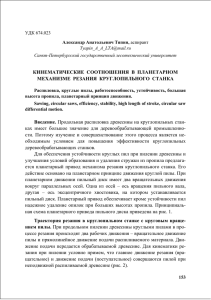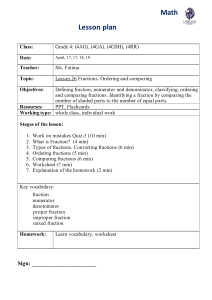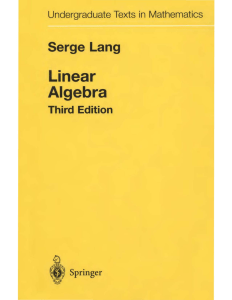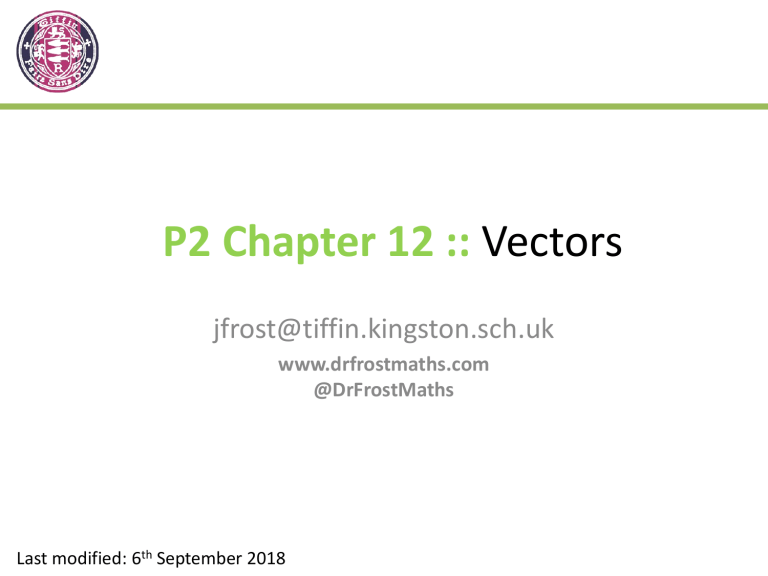
P2 Chapter 12 :: Vectors jfrost@tiffin.kingston.sch.uk www.drfrostmaths.com @DrFrostMaths Last modified: 6th September 2018 www.drfrostmaths.com Everything is completely free. Why not register? Register now to interactively practise questions on this topic, including past paper questions and extension questions (including MAT + UKMT). Teachers: you can create student accounts (or students can register themselves), to set work, monitor progress and even create worksheets. With questions by: Dashboard with points, trophies, notifications and student progress. Questions organised by topic, difficulty and past paper. Teaching videos with topic tests to check understanding. Chapter Overview This chapter is not hugely long, nor intended to be demanding (relatively speaking!). It’s a reminder of how 3D coordinates work (which you may have encountered at GCSE), and extends some of the results you learned in Year 1 vectors from 2D to 3D. 1:: Distance between two points. 2:: 𝑖, 𝑗, 𝑘 notation for vectors What’s the distance between (1,0,4) and (−3,5,9)? 1 −2 5 → 𝒊 − 2𝒋 + 5𝒌 3:: Magnitude of a 3D vector and using it to find angle between vector and a coordinate axis. 4:: Solving Geometric Problems “Find the angles that the vector 𝒂 = 2𝒊 − 3𝒋 − 𝒌 makes with each of the positive coordinate axis.” 5:: Application to Mechanics Same as Year 1 but with 3D vectors. Using 𝐹 = 𝑚𝑎 with 3D force/acceleration vectors and understanding distance is the magnitude of the 3D displacement vector, etc. Note for teachers: All the harder vectors content from C4 has been moved to Further Maths, i.e. no vector equations of straight lines nor dot product nor angles between vectors (except with a coordinate axis). Distance from the origin and magnitude of a vector 𝑦 In 2D, how did we find the distance from a point to the origin? Using Pythagoras: 3,4 𝒅= 𝑑 𝑧 𝟑𝟐?+ 𝟒𝟐 = 𝟓 4 𝑥 3 𝑦 3,4,12 How about in 3D then? You may be familiar with this method from GCSE. Using Pythagoras on the base of the cuboid: 𝟑𝟐 + 𝟒𝟐 = 𝟓 Then using the highlighted triangle: ? 𝟓𝟐 + 𝟏𝟐𝟐 = 𝟏𝟑 We could have similarly done this is one go using: 𝑥 𝟑𝟐 + 𝟒𝟐 + 𝟏𝟐𝟐 = 𝟏𝟑 From Year 1 you will be familiar with the magnitude |𝒂| of a vector 𝒂 being its length. We can see from above that this nicely extends to 3D: 𝑥 ! The magnitude of a vector 𝒂 = 𝑦 : 𝑧 𝒂 = 𝑥2 + 𝑦2 + 𝑧2 And the distance of (𝑥, 𝑦, 𝑧) from the origin is 𝑥 2 + 𝑦 2 + 𝑧 2 Distance between two 3D points 𝑧 𝑦 𝑃 3,4,12 𝑥 How do we find the distance between 𝑃 and 𝑄? It’s just the magnitude/length of the vector between them. i.e. 𝟏 ? 𝑷𝑸 = −𝟓 −𝟓 = 𝟏𝟐 + −𝟓 𝟐 + −𝟓 𝟐 = 𝟓𝟏 𝑄 4, −1,7 ! The distance between two points is: Δ𝑥 means 2 2 2 𝑑 = Δ𝑥 + Δ𝑦 + Δz “change in 𝑥” Quickfire Questions: Distance of (4,0, −2) from the origin: 𝟒𝟐 + 𝟎𝟐 + −𝟐 𝟐 = 𝟐𝟎 ? 5 4 −1 = 𝟓𝟐 + 𝟒𝟐 ? + −𝟏 Distance between (0,4,3) and 5,2,3 . 𝒅 = 𝟓𝟐 + −𝟐 𝟐 + 𝟎𝟐 = 𝟐𝟗 ? Distance between (1,1,1) and 2,1,0 . 𝒅= 𝟐 = 𝟒𝟐 Fro Tip: Because we’re squaring, it doesn’t matter whether the change is negative or positive. 𝟏𝟐 + 𝟎𝟐 + 𝟏𝟐 = 𝟐 ? Distance between (−5,2,0) and −2, −3, −3 . 𝒅= ? 𝟑𝟐 + 𝟓𝟐 + 𝟑𝟐 = 𝟒𝟑 Test Your Understanding So Far… [Textbook] Find the distance from the origin to the point 𝑃(7,7,7). 𝟕𝟐 + 𝟕𝟐 +?𝟕𝟐 = 𝟕 𝟑 [Textbook] The coordinates of 𝐴 and 𝐵 are (5,3, −8) and 1, 𝑘, −3 respectively. Given that the distance from 𝐴 to 𝐵 is 3 10 units, find the possible values of 𝑘. 𝟒𝟐 + 𝒌 − 𝟑 𝟐 + 𝟓𝟐 = 𝟑 𝟏𝟎 𝒌𝟐 − 𝟔𝒌 + 𝟓𝟎 = 𝟑 𝟏𝟎 𝒌𝟐 − 𝟔𝒌 + 𝟓𝟎 = 𝟗𝟎 ?𝟎 𝒌𝟐 − 𝟔𝒌 − 𝟒𝟎 = 𝒌 + 𝟒 𝒌 − 𝟏𝟎 = 𝟎 𝒌 = −𝟒 𝒐𝒓 𝒌 = 𝟏𝟎 𝒊, 𝒋 and 𝒌 notation In 2D you were previously introduced to 𝒊 = the 𝑥 and 𝑦 directions. It meant for example that 1 0 and 𝒋 = as unit vectors in each of 0 1 1 8 0 8 could be written as 8𝒊 − 2𝒋 since 8 −2 = 0 −2 1 −2 Unsurprisingly, in 3D: 1 0 0 𝒊 = 0 ,𝒋 = 1 ,𝒌 = 0 0 0 1 2 Write as a column vector: Quickfire Questions ? 1 Put in 𝑖, 𝑗, 𝑘 notation: 1 2 = 𝒊 + 2𝒋 + 3𝒌 3 ? 3 0 = 3𝒊 − 𝒌 −1 ? 1 0 𝒊 − 𝒋 = −1 4𝒋 + 𝒌 = 4 0 1 3 If 𝐴 1,2,3 , 𝐵 4,0, −1 then 3 𝐴𝐵 = −2 −4 0 6 2 4 If 𝒂 = 3 and 𝒃 = −1 then 3𝒂 + 2𝒃 = 7 4 3 18 −7 3 = −7𝒊 + 3𝒋 0 ? ? ? ? Examples Find the magnitude of 𝒂 = 2𝒊 − 𝒋 + 4𝒌 and hence find 𝒂, the unit vector in the direction of 𝒂. Magnitude of 𝑎 is 𝑎 = 22 + −1 2 + 42 = 21 𝒂 1 ? 𝒂= = 2𝒊 − 𝒋 + 4𝒌 𝒂 21 Recall from Year 1 that if the length/magnitude of the vector is 21, then clearly dividing this vector by 21 will give a length of 1. It has unit length and therefore is known as a unit vector. 2 4 If 𝒂 = −3 and 𝒃 = −2 is 2𝒂 − 3𝒃 parallel to 4𝒊 − 5𝒌. 5 0 8 4 4 2𝒂 − 3𝒃 = = 2 0 which is a?multiple of 0 0 −10 −5 −5 ∴ parallel. Angles between vectors and an axis 𝑧 How could you work out the angle between a vector and the 𝑥-axis? 𝑦 Just form a right-angle ? triangle! 𝒂 𝜃𝑥 𝑥 𝑥 𝑥 ! The angle between 𝒂 = 𝑦 and the 𝑥-axis is: 𝑧 𝑥 cos 𝜃𝑥 = 𝒂 and similarly for the 𝑦 and 𝑧 axes. [Textbook] Find the angles that the vector 𝒂 = 2𝒊 − 3𝒋 − 𝒌 makes with each of the positive coordinate axis. 22 + −3 2 + −1 2 = 14 2 cos 𝜃𝑥 = → 𝜃𝑥 = 57.7° 14 −3 cos 𝜃𝑦 = → 𝜃𝑦 = 143.3° 14 −1 cos 𝜃𝑧 = → 𝜃𝑧 = 105.5° 14 𝑎 = ? Test Your Understanding [Textbook] The points 𝐴 and 𝐵 have position vectors 4𝒊 + 2𝒋 + 7𝒌 and 3𝒊 + 4𝒋 − 𝒌 relative to a fixed origin, 𝑂. Find 𝐴𝐵 and show that Δ𝑂𝐴𝐵 is isosceles. −𝟏 𝑨𝑩 = 𝟐 ∴ 𝑨𝑩 = −𝟏 −𝟖 𝑶𝑨 = 𝟒𝟐 + 𝟐𝟐 + 𝟕𝟐 = 𝟔𝟗 𝟐 + 𝟐𝟐 + −𝟖 𝟐 = 𝟔𝟗 ? 𝑶𝑩 = 𝟑𝟐 + 𝟒𝟐 + −𝟏 𝟐 = 𝟐𝟔 𝑨𝑩 = 𝑶𝑨 (but ≠ 𝑶𝑩 ) therefore 𝑶𝑨𝑩 is isosceles. We can find 𝐴𝐵 by simply looking at the change from 4 to 3, and so on. The textbook has a longwinded way of writing 4 3 𝑂𝐴 = 2 and 𝑂𝐵 = 4 , 7 −1 then finding 𝐴𝐵 = 𝑂𝐵 − 𝑂𝐴. Overkill! (a) Find the angle that the vector 𝒂 = 2𝒊 + 𝒋 + 𝒌 makes with the 𝑥-axis. (b) By similarly considering the angle that 𝒃 = 𝒊 + 3𝒋 + 2𝒌 makes with the 𝑥-axis, determine the area of 𝑂𝐴𝐵 where 𝑂𝐴 = 𝒂 and 𝑂𝐵 = 𝒃. (Hint: draw a diagram) a 22 + 12 + 12 = 6 2 cos 𝜃𝑥 = 𝜃𝑥 = 35.264° 6 𝒂 = ? b 12 + 32 + 22 = 14 1 cos 𝜃𝑥 = 𝜃𝑥 = 74.499° 14 𝐵 𝒃 = 14 ? Using diagram, ∠𝐵𝑂𝐴 = 75.499 − 35.264 = 39.235°. 1 ∴ 𝐴𝑟𝑒𝑎 = × 6 × 14 × sin 39.235 = 2.90 2 6 74.499° 35.264° 𝑂 𝐴 𝑥 Exercise 12B Pearson Pure Mathematics Year 2/AS Pages 341-343 Geometric Problems For more general problems involving vectors, often drawing a diagram helps! [Textbook] 𝐴, 𝐵, 𝐶 and 𝐷 are the points 2, −5, −8 , 1, −7, −3 , (0,15, −10) and 2,19, −20 respectively. a. Find 𝐴𝐵 and 𝐷𝐶, giving your answers in the form 𝑝𝒊 + 𝑞𝒋 + 𝑟𝒌. b. Show that the lines 𝐴𝐵 and 𝐷𝐶 are parallel and that 𝐷𝐶 = 2𝐴𝐵. c. Hence describe the quadrilateral 𝐴𝐵𝐶𝐷. a 𝑨𝑩 = −𝒊 − 𝟐𝒋 + 𝟓𝒌 𝑫𝑪 = −𝟐𝒊 − 𝟒𝒋?+ 𝟏𝟎𝒌 b 𝑫𝑪 = 𝟐 −𝒊 + 𝟐𝒋 + 𝟓𝒌 = 𝟐𝑨𝑩 ? They are multiples ∴ parallel. c 𝑨𝑩 and 𝑫𝑪 are parallel but ? different in length. Therefore 𝑨𝑩𝑪𝑫 is a trapezium. [Textbook] 𝑃, 𝑄 and 𝑅 are the points 4, −9, −3 , (7, −7, −7) and 8, −2,0 respectively. Find the coordinates of the point 𝑆 so that 𝑃𝑄𝑅𝑆 forms a parallelogram. 𝑆 𝑃(4, −9, −3) 𝑅(8, −2,0) 𝑄(7, −7, −7) −𝟑 𝑸𝑷 = −𝟐 𝟒 ∴ 𝑶𝑺 = 𝑶𝑹 + 𝑹𝑺 = 𝑶𝑹 + 𝑸𝑷 𝟖 −𝟑 𝟓 = −𝟐 + −𝟐 = −𝟒 𝟎 𝟒 𝟒 𝑺 𝟓, −𝟒, 𝟒 ? (Draw a diagram, recalling that the letters go in a clockwise or anticlockwise order) This is basically just saying “whatever we move from 𝑄 to 𝑃, we do the same movement starting from 𝑅” Comparing Coefficients There are many contexts in maths where we can ‘compare coefficients’, e.g. 3𝑥 2 + 5𝑥 ≡ 𝐴 𝑥 2 + 1 + 𝐵𝑥 + 𝐶 Comparing 𝑥 2 terms: 3 = 𝐴 We can do the same with vectors: [Textbook] Given that 3𝒊 + 𝑝 + 2 𝒋 + 120𝒌 = 𝑝𝒊 − 𝑞𝒋 + 4𝑝𝑞𝑟𝒌, find the values of 𝑝, 𝑞 and 𝑟. [Textbook] The diagram shows a cuboid whose vertices are 𝑂, 𝐴, 𝐵, 𝐶, 𝐷, 𝐸, 𝐹 and 𝐺. Vectors 𝑎, 𝑏 and 𝑐 are the position vectors of the vertices 𝐴, 𝐵 and 𝐶 respectively. Prove that the diagonals 𝑂𝐸 and 𝐵𝐺 bisect each other. 𝐶 𝐵 Comparing 𝑖: 3 = 𝑝 Comparing 𝑗: 𝑝 + 2?= −𝑞 ∴ 𝑞 = −5 Comparing 𝑘: 120 = 4𝑝𝑞𝑟 ∴ 𝑟 = −2 𝐸 𝐹 𝒃 𝐺 𝒄 𝐻 𝐷 𝒂 𝐴 𝑂 The strategy behind this type of question is to find the point of intersection in 2 ways, and compare coefficients. Suppose there is a point of intersection 𝐻 of 𝑂𝐸 and 𝐵𝐺. We can get to 𝐻 in two ways: 𝑂𝐻 = 𝑟 𝑂𝐸 for some scalar 𝑟. 𝑂𝐻 = 𝑂𝐵 + 𝐵𝐻 = 𝑂𝐵 + 𝑠 𝐵𝐺 for some scalar 𝑠. ? 𝑂𝐻 = 𝑟 𝒂 + 𝒃 + 𝒄 = 𝒃 + 𝑠 𝒂 − 𝒃 + 𝒄 𝑟𝒂 + 𝑟𝒃 + 𝑟𝒄 = 𝑠𝒂 + 1 − 𝑠 𝒃 + 𝑠𝒄 Comparing coefficients, 𝑟 = 𝑠 and 𝑟 = 1 − 𝑠 1 Adding: 2𝑟 = 1 ∴ 𝑟 = 𝑠 = 2 Therefore lines bisect each other. Exercise 12C Pearson Pure Mathematics Year 2/AS Pages 346-347 Application to Mechanics Out of displacement, speed, acceleration, force, mass and time, all but mass and time are vectors. Clearly these can act in 3D space. Scalar Vector Force Acceleration Displacement Velocity 3 4 −1 1 0 1 12 3 4 0 4 3 𝑁 32 + 42 + −1 ? = 5.10 𝑁 2 𝑚𝑠 −2 1.41 𝑚𝑠 −2 ? 𝑚 13 𝑚 ? Distance 5𝑚 ? Speed 𝑚𝑠 −1 Example [Textbook] A particle of mass 0.5 kg is acted on by three forces. 𝐹1 = 2𝒊 − 𝒋 + 2𝒌 𝑁 𝐹2 = −𝒊 + 3𝒋 − 3𝒌 𝑁 𝐹3 = 4𝒊 − 3𝒋 − 2𝒌 𝑁 a. Find the resultant force 𝑅 acting on the particle. b. Find the acceleration of the particle, giving your answer in the form 𝑝𝒊 + 𝑞𝒋 + 𝑟𝒌 ms-2. c. Find the magnitude of the acceleration. Given that the particle starts at rest, d. Find the distance travelled by the particle in the first 6 seconds of its motion. a. b. c. d. −1 2 4 5 −1 + 3 + ?−3 = −1 𝑁 −3 −2 2 −3 𝑭 = 𝑚𝒂 10 5 ? −1 = 0.5𝑎 ∴ 𝒂 = −2 𝑚𝑠 −2 −6 −3 𝒂 = 102 + −2 2 +? −6 2 = 140 ms-2 𝑢 = 0, 𝑎 = 140 𝑚𝑠 −2 , 𝑡 = 6 𝑠, 𝑠 =? 1 2 1 𝑠 = 𝑢𝑡 + 𝑎𝑡 = × ? 140 × 62 = 36 35 𝑚 2 2 Exercise 12D Pearson Pure Mathematics Year 2/AS Pages 348-349 The End


